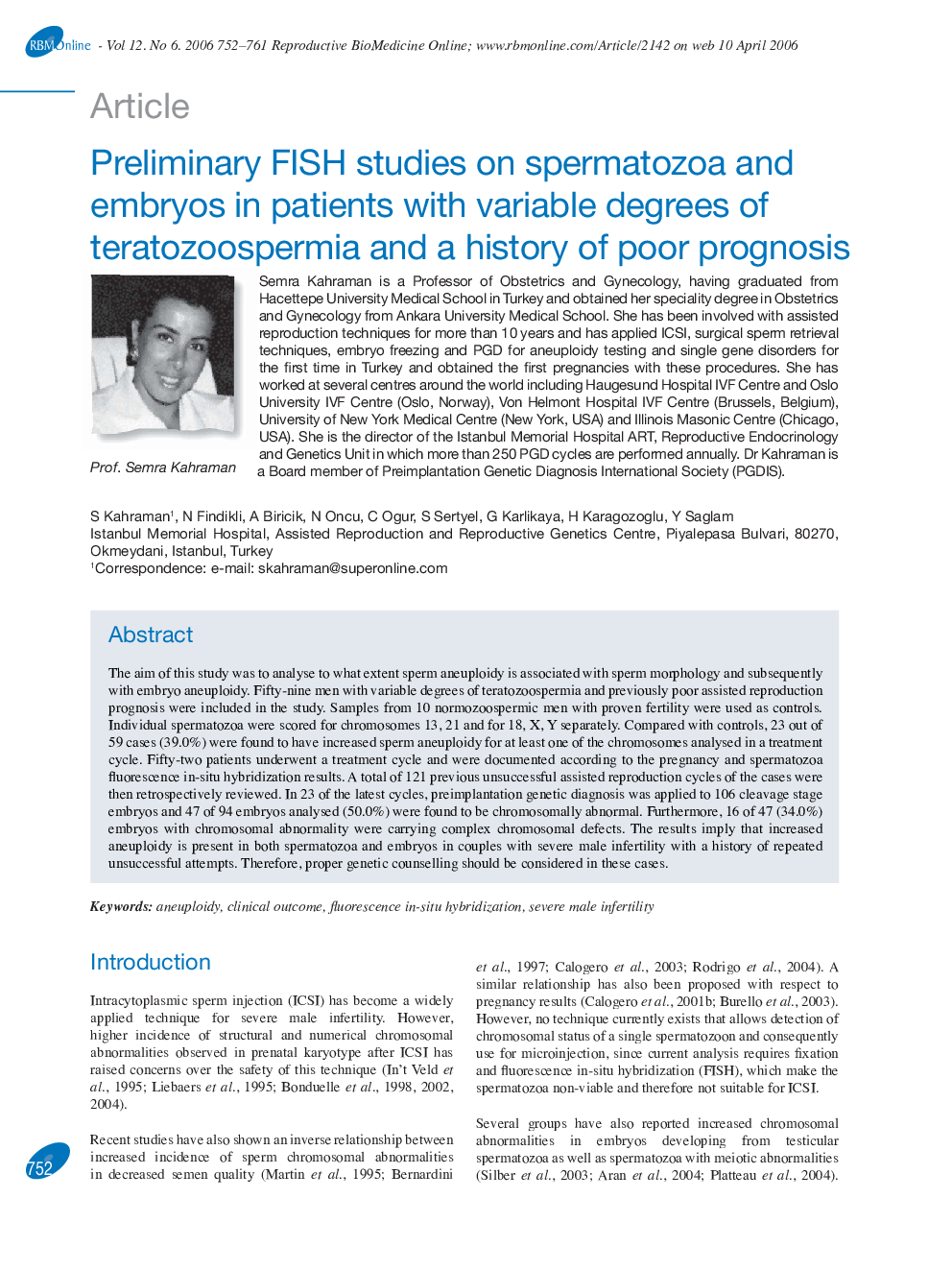| Article ID | Journal | Published Year | Pages | File Type |
|---|---|---|---|---|
| 3973672 | Reproductive BioMedicine Online | 2006 | 10 Pages |
The aim of this study was to analyse to what extent sperm aneuploidy is associated with sperm morphology and subsequently with embryo aneuploidy. Fifty-nine men with variable degrees of teratozoospermia and previously poor assisted reproduction prognosis were included in the study. Samples from 10 normozoospermic men with proven fertility were used as controls. Individual spermatozoa were scored for chromosomes 13, 21 and for 18, X, Y separately. Compared with controls, 23 out of 59 cases (39.0%) were found to have increased sperm aneuploidy for at least one of the chromosomes analysed in a treatment cycle. Fifty-two patients underwent a treatment cycle and were documented according to the pregnancy and spermatozoa fluorescence in-situ hybridization results. A total of 121 previous unsuccessful assisted reproduction cycles of the cases were then retrospectively reviewed. In 23 of the latest cycles, preimplantation genetic diagnosis was applied to 106 cleavage stage embryos and 47 of 94 embryos analysed (50.0%) were found to be chromosomally abnormal. Furthermore, 16 of 47 (34.0%) embryos with chromosomal abnormality were carrying complex chromosomal defects. The results imply that increased aneuploidy is present in both spermatozoa and embryos in couples with severe male infertility with a history of repeated unsuccessful attempts. Therefore, proper genetic counselling should be considered in these cases.
